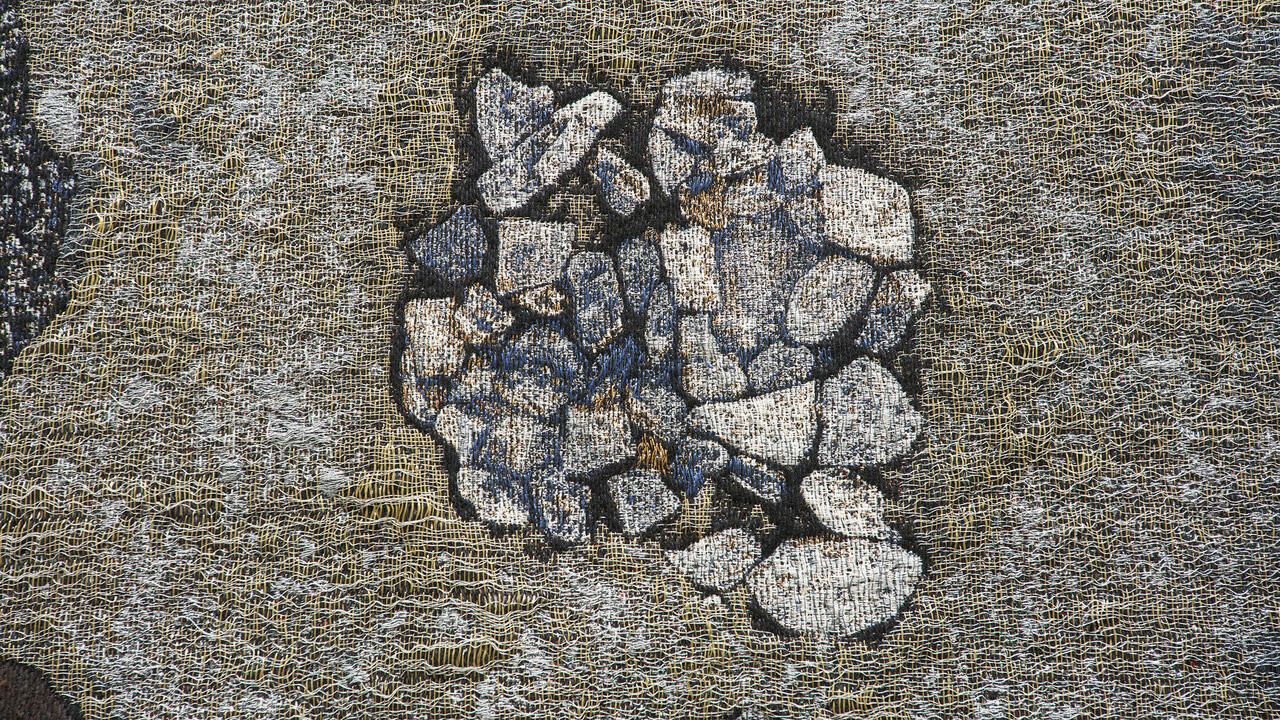Clegg & Guttmann

Not so long ago, a power suit was more than a suit, politicians weren’t merely regarded as actors playing their roles, and their goals weren’t only (if only coincidentally) those of large corporations. Clegg & Guttmann’s quietly provocative exhibition ‘Portraits and Other Cognitive Exercises 2001–2012’ brought us back to this era. In an interview in the catalogue, Michael Clegg and Martin Guttmann recount standing in line at the unemployment office in New York. Suddenly came the announcement: all extended social benefits were to be cut, including weekly unemployment checks. It was 1981 and Ronald Reagan had taken office.
Clegg & Guttmann’s practice is an epistemological one, in which they deconstruct and then reconstitute our world in order to reveal the artificiality of what we accept to be the natural order of things. The exhibition traced the evolution of the pair’s work over the past three decades by focusing on more recent iterations of their ongoing series of ‘library’ sculptures, their relational aesthetics series ‘Cognitive Exercises’ (2001–ongoing) and their early portraits, begun in 1981. The combination served to locate similarities in the approaches to works whose outcomes appear vastly different. It also re-contextualized the early portraits and, in this sense, felt as enlightening as it did revisionist.
The two met as teenagers at an art camp in Israel, and then again years later in Joseph Kosuth’s studio in New York, where Guttmann was Kosuth’s assistant and Clegg a student at the School of Visual Art, where Kosuth taught. They began working together by photographing portraits of fictitious patrons and business executives in the tradition of 16th- and 17th-century group portraiture. These early photographic portraits were central to the exhibition at the BAWAG Contemporary. The artists found their characters by advertising in papers, or turned to willing friends and family members. In the diptych Executives of the Steel Industry versus Executives of the Textile Industry (1980), for example, 12 men (including Clegg’s grandfather) are gathered. Their faces and hands and the white collars of their dress shirts are illuminated; everything else recedes into black. The subjects’ facial expressions – hardened, purposeful, slightly sinister – are far from the neutral gazes of portraits by Thomas Struth or Rineke Dijkstra. Over time, the photograph, which could initially be mistaken for an actual corporate portrait, melts and enters into the territory of Cindy Sherman-esque parody. Before our eyes, the men photographed eventually slip out of character. It’s hard to imagine a contemporary variation with Bernie Madoff, Mark Zuckerberg or Hank Paulson – not only because we’re now used to scrutinizing CEOs’ faces in tabloids, but also because this species has acquired a certain vulnerability today, for which the Clegg & Guttmann formula no longer holds.
What Clegg & Guttmann do for power in photographs, they also do for knowledge with their library sculptures, begun in the late 1990s. Moebius Library (2005), a sculptural Möbius strip partitioned into bookshelves, comments on the arbitrariness of the act of book-collecting and ordering: following the curve brings one back to the same point, but facing the opposite direction. Falsa Prospettiva (2001) is a sculptural and photographic trompe l’oeil of library bookshelves, the shelves towards the back gradually shrinking in size. The books are chosen from psychology, linguistics, political theory and religion shelves – each for its relevance to a discussion on false perspectives.
Several participatory works were also placed throughout the exhibition space, adding to the multiplicity of approaches the artists take in their investigations, including the Cognitive Exercise III: Continuous Drawing / Exquisite Corpse (2006), a sculptural version of the Surrealists’ favourite game, and Cognitive Exercise II: The Constrained Brahms Quartet (2008). In this work, four chairs, music-stands and instruments are set up for a cello, two violins and a viola player. Instructions for the sculpture explain how the hands of the players should be connected to one another by string whilst playing what probably won’t sound like Brahms at all.
















